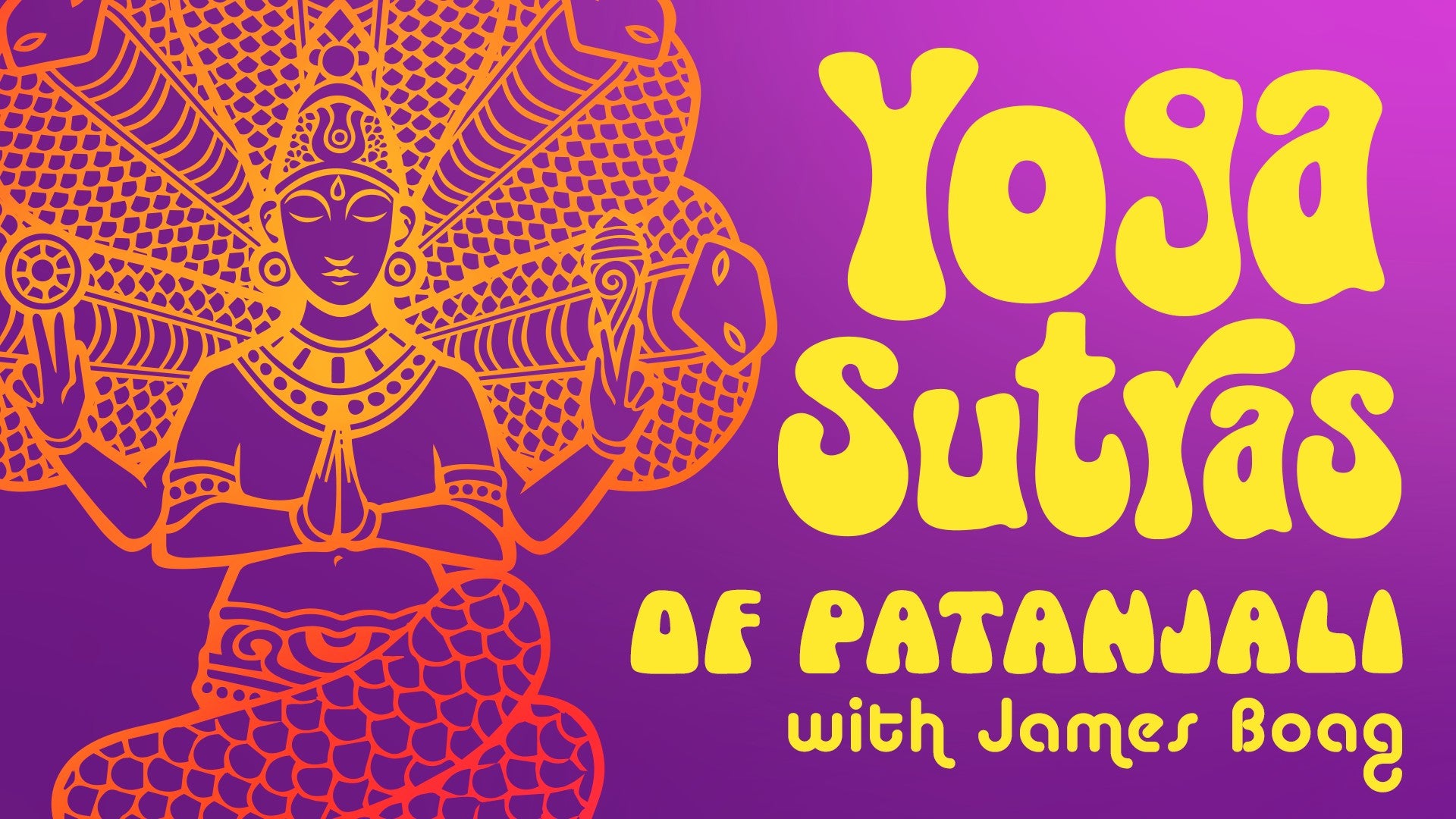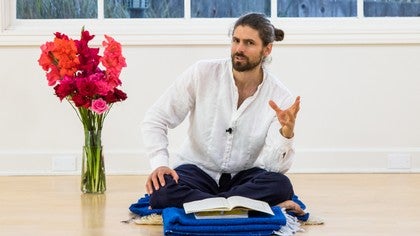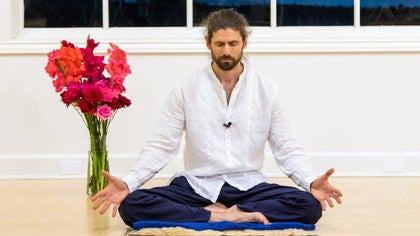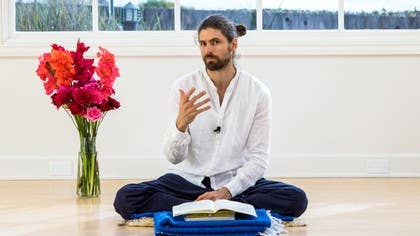Description
About This Video
Transcript
Read Full Transcript
So in these sutras, 33 to 39, Patanjic is really starting to elaborate the how to practice. And in 33, I've suggested it's the compulsory practice. It's basically the essential practice. And what is it? Basically, it just means be present.
It's nothing that he hasn't said already, but he's giving us a lens or a frame to help us understand that more in practical application. The idea being that when we are truly present, like if you're in sukam, if you're in a good space, and you're really present to it, then it's very natural that you will open to that support. Whereas if you are in the face of suffering and you're really open and present with it, a natural response is to be compassionate. If you give yourself permission, you allow yourself to relish and appreciate somebody doing something beautiful, it's natural to feel joyfulness witnessing that. And if in the face of adversity, in the face of injustice, you can also summon that deep presence, then it's natural to find that you have resources to be able to stay centered and respond skillfully.
So the basic practice is to be present all the time. But what gets in the way of that presence? There are these blockages, this detritus, this gunk, let's say, in our system. So one of the kind of practical things yoga does is gives us tools with which we can do our housework. So in the 33rd sutra, we've got these kind of attitudes or ways to be in the flow of our activities as we're engaged operating in the world.
But if that is not quite enough, if we find that sometimes we're not quite fully present, we still notice that we get fragmented, we still notice that sometimes our responses are not so conducive to harmony or deep presence. Then Patanjali gives us these options. And it's very, very beautiful the way he begins. So in the 34th sutra, Patanjali says, pratyardhana vidharana apyam vah pranasya. So vah, alternatively, in addition, as well as practicing maitri karna muritÄ쳌nupeká¹£a, as well as that basic essential practice that you do all day long, you can also work with techniques.
And techniques can include working with the prana, the life force. Pratyardhana vidar, excuse me, pratyardhana vidarana pyaam. So pyaam is a dual ending. So vidarana basically means the holding, the placing, the retaining. Pratyardhana means the movements in and the movements out.
So in other words, as a first option, you can use as your support for meditation, your alambana, the movement of the life force within you and the breath. So in this section 34 to 39, Patanjali basically uses or he basically sets out different alambanas, different supports or substrates we can use to cultivate that centered awareness, different things we can use as that center point around which we can gather the forces of our awareness and tune in to a subtler state of conscious presence. And I find it so beautiful that he starts here with prana. Now, it is true that there are some meditation techniques, if not many, that in order to practice them it is enjoined and highly recommended that in order to practice them one contacts the appropriate live lineage and seeks the appropriate initiation. And sometimes this initiation is carried out in secret for many good reasons.
But what is the first method that Patanjali advocates? You can meditate on the movement of the breath. You can meditate on the movement of the life force. In other words, you are already initiated into this because what was the first thing we did when we came out of the womb? We took a breath in and what is the last thing that we will do?
Before we leave this planet we will take a breath out and in between we will be breathing and prana, the life force will be circulating and moving within us and it is always there. So you don't have to go anywhere, you don't have to meet anyone in particular or get access to any particular technique to start tuning in with the support of a bona fide, authentic yogic alambana or support. You can work with the agency and the support of the movement of the life force and the breath in your body and there are so many techniques you can use to do this. Now of course some techniques there are many good reasons why they are given in a very particular way. Certain technologies are appropriate for certain conditions.
In yoga it is always practical. There is an ocean of techniques and those techniques that are the kind of preserve of certain lineages that the people who are the custodians of those lineages, they have developed the understanding of what types of technique are appropriate for what type of person. So just to give a simple example, certain techniques require a lot of time. So if you are a person who has lots and lots of worldly responsibilities, let's say you have children and you have a job and you have a role in your local community, then a technique that demands five hours of your time, a good teacher, a good guru is not going to give that to you. Similarly, there are some techniques that are very stimulating in the physical energy, some that are very stimulating of the emotions.
So again, sometimes it is not appropriate for certain people to use certain things because yoga is all about balance. So one man's meat is another man's poison. What could be nourishing for one person might not be nourishing for another person. And so the idea is we have to be, again, sensible and practical about the techniques that we use. But whoever you are, wherever you are, whether you have the opportunity to consult with a custodian of a live lineage or not, you can start practicing, you can start cultivating harmony, you can start deepening your experience of deep presence and integrated awareness by paying attention to the movement of the life force within you.
So you can meditate on the breath, you can meditate on the natural suspensions between the inhalation and the exhalation. You can meditate on the flow of energy through your body as you breathe. These things are always available, always accessible. And I find it so beautiful that it potentially starts with this. Because to me, one of the things that this says is that everybody can practice and you can practice wherever you are because as long as you're alive, you're qualified.
As long as you're alive, prana will be moving. And when you pay attention to it, it can reveal so much to you. One of my teachers said, forget reading books, read the book of your mind. And when you pay attention to the life force, you can really start to gain a lot of insight about the workings of your mind, the workings of your emotions, the workings of your conditionings. So the first option, basically, you can meditate on the breath, you can meditate on the movements and the placings and retentions of the life force.
Beautiful.
Yoga Sutras of Patanjali: Be in Relationship
Comments
You need to be a subscriber to post a comment.
Please Log In or Create an Account to start your free trial.









